Observing Telescopes

The Big Picture enables visitors on the Edge of Space mezzanine to use simple Observing Telescopes mounted 60 feet away to explore objects in greater detail. Two sets of small telescopes fix on pre-selected objects while two other sets offer freedom to explore.
On the floor directly in front of The Big Picture, several Field Guides allow visitors to learn more about the Virgo Cluster of galaxies and specific objects on the wall.
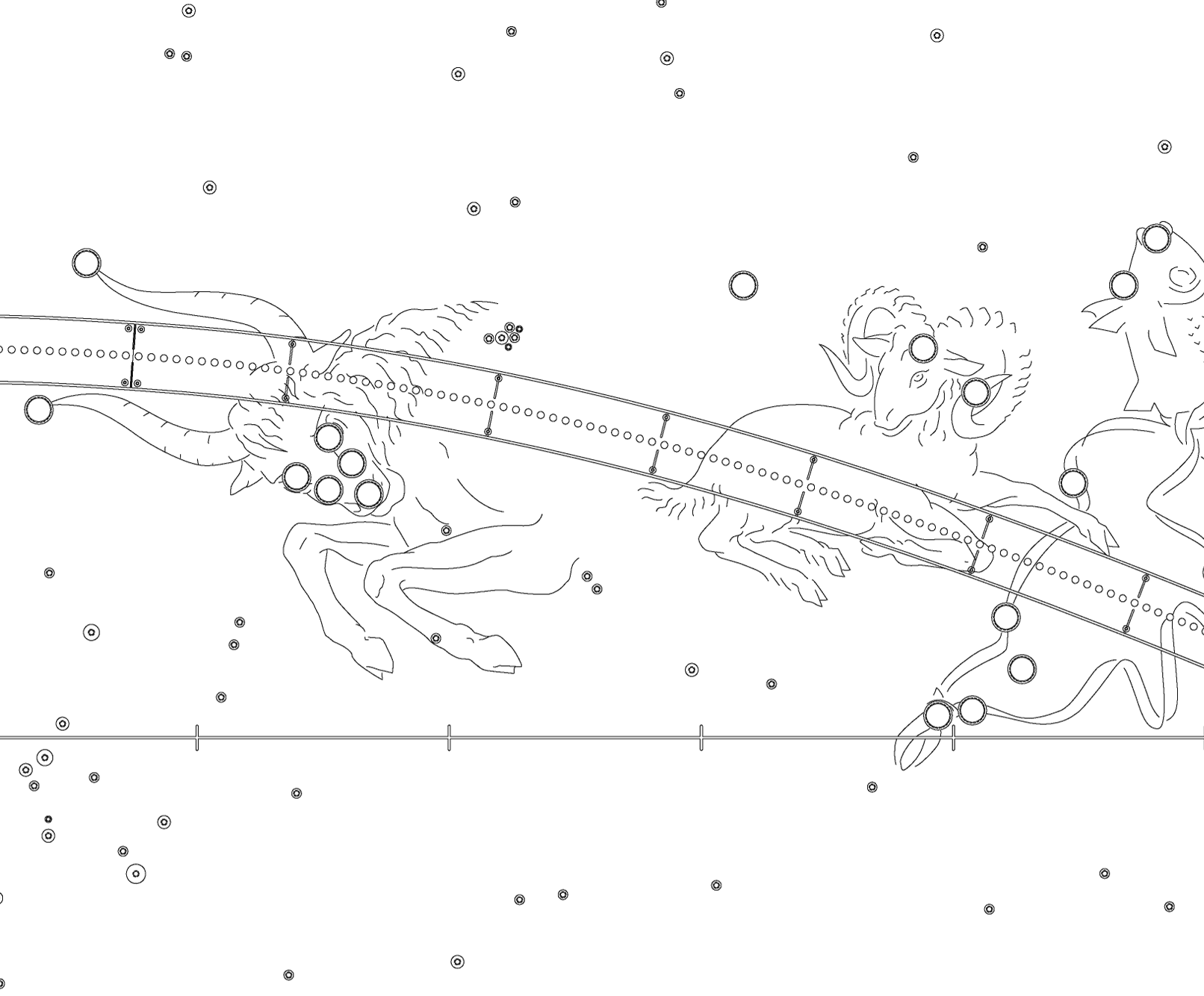
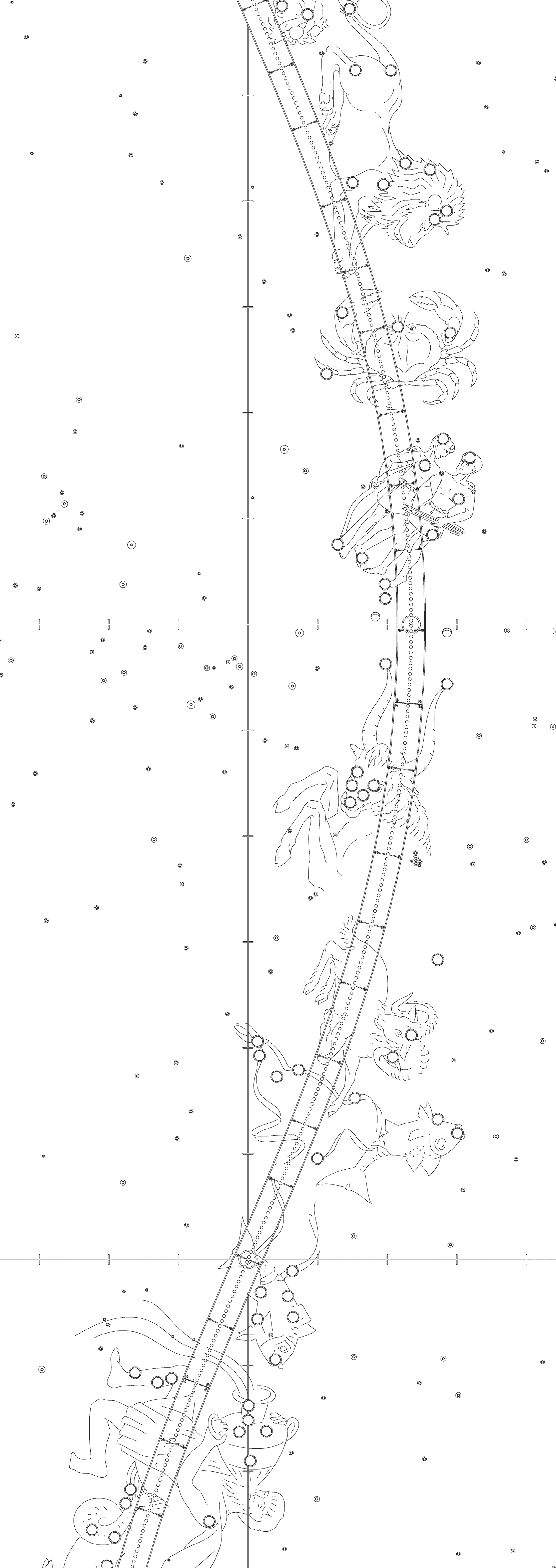
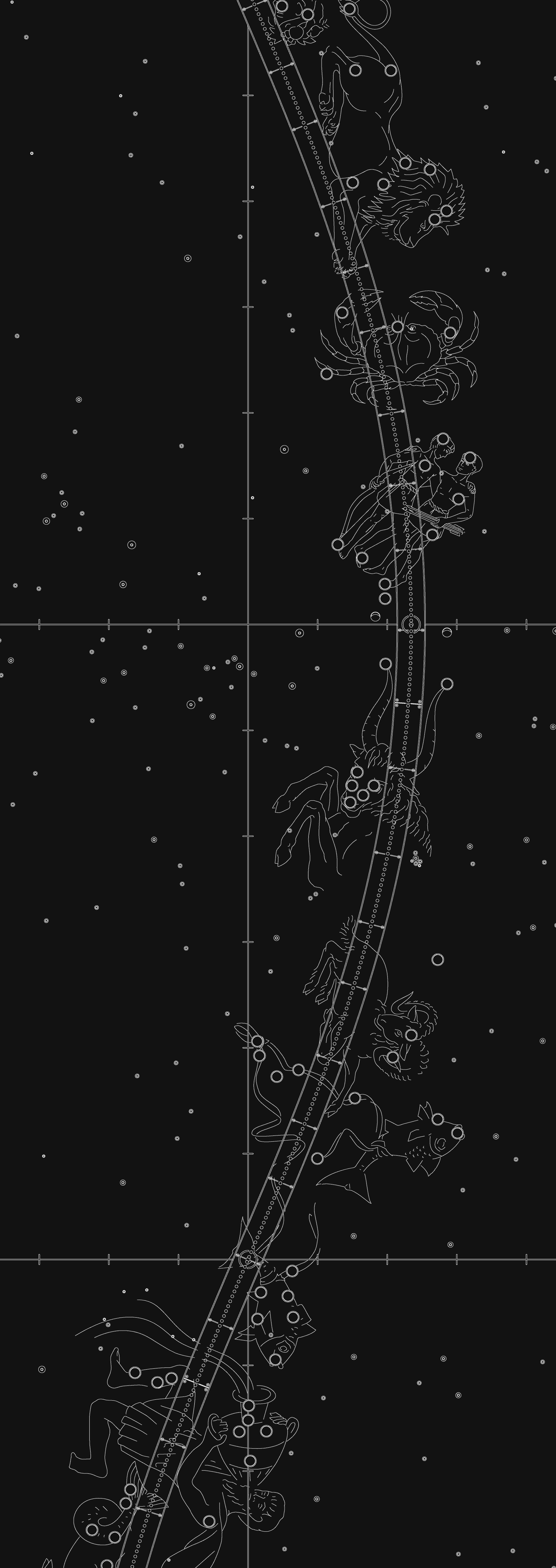
The Big Picture


You are looking at the largest astronomical image ever put on display. This deep-space vista was assembled from data taken at Palomar Observatory during weeks of observations of a tiny sliver of the night sky. Embedded in the Big Picture are hundreds of thousands of stars from our own Milky Way Galaxy and the light from about a million galaxies and nearly a thousand quasars.
A Slice of the Night Sky
The stars we see at night are in our galaxy. Other galaxies are so distant that we need telescopes to glimpse them. Our portal to this realm of galaxies is the Samuel Oschin Telescope, used by a team of astronomers and imaging scientists from Caltech and Yale to observe an area of the sky in the constellation Virgo. Their 2.46-gigapixel image tunnels past the nearby stars out to where galaxies fill the view.
Traveling to the Big Picture

What is the Big Picture?
The Big Picture is an astronomical photograph of a small slice of the universe — the amount of night sky covered by your finger held a foot from your eye. Every object in the Big Picture lies at a different distance from us. The image may look flat, but it depicts three-dimensional space. The nearest objects are the comets and asteroids in our solar system. The stars are more distant but still in our galaxy. Beyond the Milky Way are other galaxies, many clustered at a distance of 50 million light-years. The quasars are the most distant and lie billions of light-years away.
Seeing the Big Picture
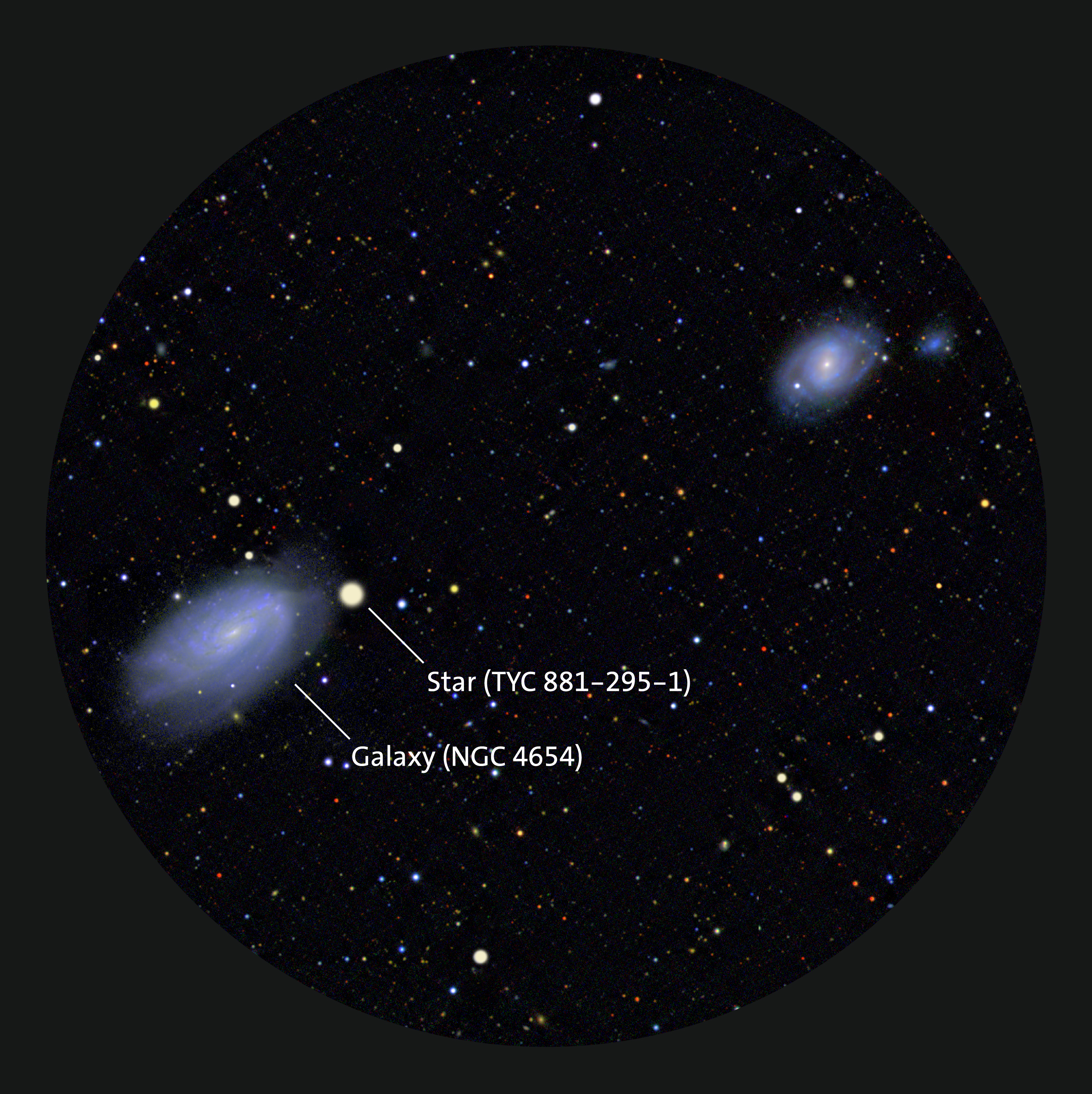
As you gaze through the telescope at the Big Picture, you see stars and galaxies. The points of light are stars in our own Milky Way Galaxy. They look like hard-edged dots and range in color from blue-white (hot stars) to yellow, orange, and red (cooler stars).

Galaxies appear as large, fuzzy spots of light. Every galaxy you see in the Big Picture lies at least 50 million light-years away. Galaxies with hot, young stars and active star-forming regions look blue. Those populated with old, cool stars tend to look red or yellow. These galaxies stopped forming stars long ago and contain no active regions of star creation.
Scan a Field of Galaxies


As you sweep the telescope across the Big Picture, the brightest objects you see are galaxies that are part of the Virgo Cluster. Each galaxy is a collection of billions of stars. Because the galaxies you see here are so far away, the light from their stars merges together into a soft glow.
Astronomers classify galaxies by how they look. The most common shapes are ellipticals and spirals. Ellipticals are more oval-shaped and have few, if any, areas where stars form. Spirals look like flat disks and have arms and star-forming regions. When we observe the Big Picture, we see mostly elliptical and spiral galaxies throughout the Virgo Cluster.
Area A
Elliptical galaxy NGC 4473:
- egg-like shape
- few active star-forming regions
- likely formed by merging galaxies
Area B
Three spiral galaxies: NGC 4222, NGC 4216, and NGC 4206:
- disk-like shape
- spiral arms
- active star-forming regions
Explore the Virgo Cluster


If you point the telescope at the Big Picture and sweep across the image, you are looking at the Virgo Cluster. This collection of more than 2,000 galaxies is distributed across 10 million light-years. The cluster is 50 million light-years away from our Milky Way Galaxy. Near its center lies a relatively close-knit curved-looking group called Markarian’s Chain.
The universe is filled with clusters of galaxies. Each galaxy is a massive object with billions of stars. The Virgo Cluster has spiral and elliptical galaxies, plus a few lenticulars, which are disk-shaped but have no spiral arms. Gravity holds them all together in the cluster. This neighboring collection of galaxies is our first step into the large-scale structure of the universe.
Area A
- lenticular galaxy NGC 4477
- lenticular galaxy NGC 4479
- elliptical galaxy NGC 4473
Area B
- spiral galaxy NGC 4222
- spiral galaxy NGC 4216
- spiral galaxy NGC 4206
Watching Galaxies Change
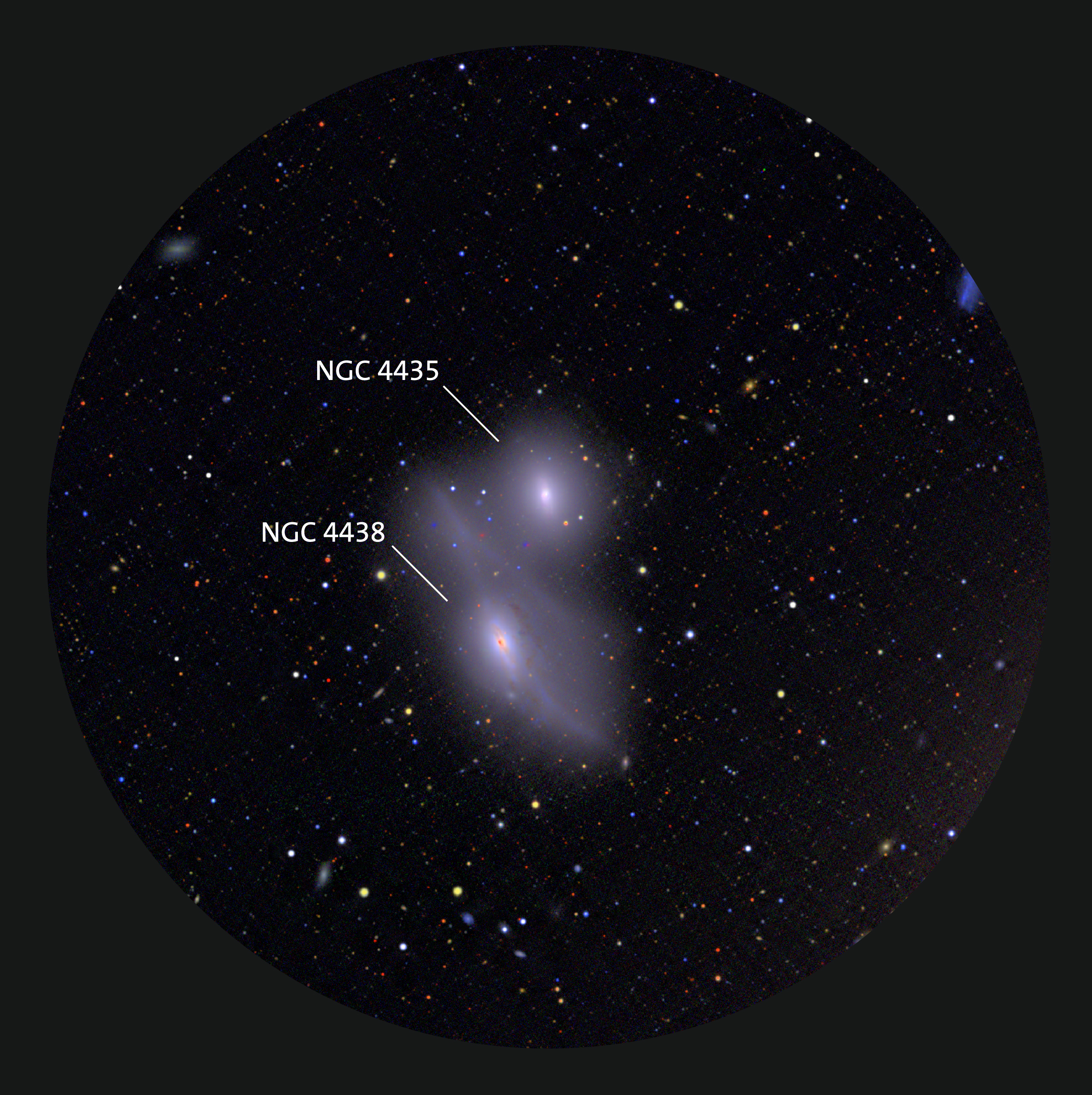
All galaxies formed in the first billion years after the creation of the universe in the Big Bang. Over time, they evolved through mergers and interactions into the shapes we see today. When two galaxies meet, as you see with NGC 4435 and NGC 4438 (right), they pull long streams of material across space. These tidal tails erupt in brilliant bursts of star formation. When galaxies merge, their stars mingle for millions of years. Eventually, massive elliptical galaxies result from these mergers.
The sequence below simulates two spiral galaxies interacting and merging with each other. At the end of the 10-billion-year-long process, all that remains of the two spirals is an elliptical galaxy.





